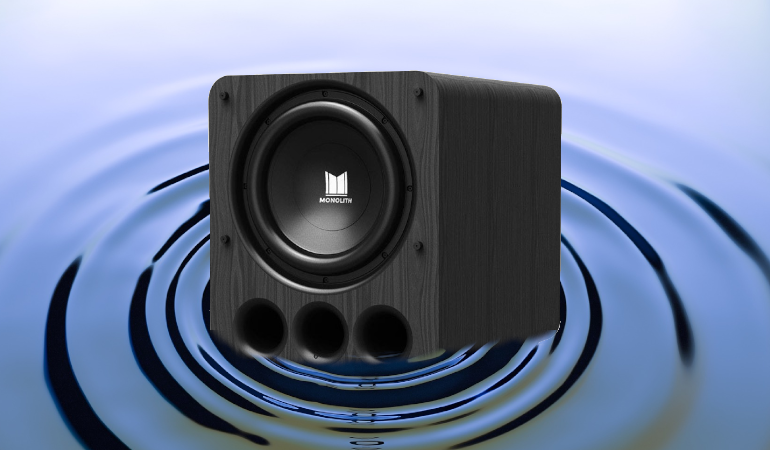“I Want a Subwoofer that will Pressurize My Room” – A Clear Definition
Many terms are thrown around in the Home Theater arena that everyone seems to understand. I strive to make sure all of these terms are defined. That’s why I write about uniformity, blind tests, reference level, curves of equal loudness, omnidirectional sounds, FALD, and more. But I’ve noticed that I’ve referred, in many articles, to a subwoofer “pressurizing” a room. So I thought I should write an article defining what it means when a subwoofer pressurizes a room. I quickly discovered that I didn’t really know! I knew what it sounded like, but not a scientific definition. Let’s remedy that!
The Internet Isn’t Sure What “Pressurization” Means
Search for “subwoofer pressurization” and “room” and you’ll find a lot of links to Reddit threads and forum posts of people wondering the same thing. They want a subwoofer, they’ve heard that it should “pressurize the room,” but they don’t know what that means. The most common response? You’ll know it when you feel it.
That response isn’t untrue. You will know it when you experience it. But it doesn’t help you shop. It also doesn’t help you know what it is.
How Your Room Plays a Role
To really understand how a subwoofer pressurizes a room, we have to know a little about how bass works. We’ve talked about room acoustics and dual subwoofers before. As bass radiates in all directions, the sound waves interact with the walls before your ears can experience a full wave. That means that your room, by definition, affects how you hear the bass in your room.
Here’s where we are going to have to get a little technical.
With your regular speakers and the higher notes, the further away you get from the speaker, the softer they sound. Normal speakers should sound quieter with greater distance. This is something you know because you’ve experienced it. With bass, we can’t separate the room from the sound we hear.

SPL is Not Enough
Acousticians often work in industrial settings. They have to predict how loud a warehouse will be with all the equipment running. Like your subwoofer, each piece of gear has an SPL rating. This is how much noise the equipment makes. But, also like your subwoofer, knowing how much noise it makes is not enough. It tells us how loud they can be given specific parameters, not how loud they will be in a particular space.
For most subwoofers, their measurements are taken using the CEA-2010-A procedure. This allows us to make apples-to-apples comparisons. These measurements are (traditionally) taken outside with no walls around at two meters with the microphone on the ground. We can compare the SPL output of subwoofers to each other, but doesn’t tell us how they’ll interact with your room.
Defining Pressurization
We’ve often said that your room and your subwoofers work together to produce the bass you hear. That is true and will make more sense when we know the definition of pressurization. The simplest way to think of what it feels or sounds like to experience a subwoofer pressurizing a room is this: Pressurization is when you can move yourself or your subwoofers through your room without affecting the SPL measurement of the sound.
Remember, the subwoofers and the room work together. If your room is open to other parts of the house, some of that bass is escaping. It will reflect back into the room eventually, but its SPL will be lower. A fully pressurized room will not have bass SPL changes based on distance. That’s what pressurization really entails.

Discussion
Obviously, bass uniformity is a huge problem in home theater. We aren’t saying that you can take any specific frequency and it will measure the same at any point in the room. We are saying that the overall experience of the bass doesn’t change as you move around the room. Cancelations and boosts created because of sound wave interactions will happen. The key is that physical distance from the subwoofer doesn’t change the overall experience of the bass.
In a small room, this is easy to experience. You may have more or less even bass based on where you stand or position your subwoofers, but walking away from your subwoofers won’t lower the overall level of the bass.
In a large room, this is harder to achieve. But with large enough subwoofers, or just a large enough number of subwoofers, you could also pressurize that space. This is why we often say that it isn’t advisable to try to pressurize your home theater that is open to your kitchen and other rooms. If you were to pressurize that space, every room would experience the same volume of bass. While your speakers would get quieter as you moved from your theater area to your kitchen, the bass would not.
What About Shopping?
This is where things get a bit more difficult. While the CEA-2010-A measurements should allow you to predict which subwoofers will pressurize a room, it takes more information. You need to know the cubic volume of the enclosed space. Ideally, you’d know all the materials that were in the room including sound-absorbing panels, furniture, and everything else.
Fortunately, many sites and manufacturers have done that math for you. Usually, just knowing the actual cubic volume of air in your enclosed space is enough. Take that information and either contact the manufacturer or look up online what size room you have. Most sites have some sort of table that will list the volume and give it a label (small, medium, large, etc.) Now, most of these sites overlap these labels, but not all. If they suggest you have a medium room, that doesn’t ensure that everyone means the same thing by “medium.”
With this information, you should be able to shop safely and know, when you buy your subwoofers, whether or not they will pressurize your room.


